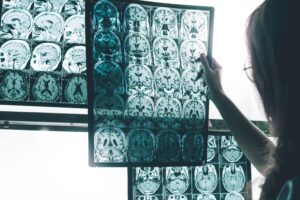Microglial cells are central mediators of neuroinflammation, and in vitro models are essential for studying their activation profiles. Lipopolysaccharide (LPS) is a well-established and potent microglial activator, widely used in neuroinflammation research due to its strong and consistent effects. Nonetheless, it represents a partially unphysiological stimulus in the context of neuroinflammation. To address this, LPS compared to several cytokine cocktails were tested for they efficacy to induce neuroinflammation to better mimic the complex inflammatory environment in vitro. In this study, we thus compared the responses of murine (BV-2) and human (HMC3) microglial cell lines to different pro-inflammatory stimuli. Cells were stimulated either with LPS or one of five different cytokine cocktails representing combinations of interferon γ (IFN-γ), tumor necrosis factor α (TNF-α), and interleukin 1-β (IL-1β) and inflammatory activation was assessed on the transcriptional and protein level 24 h after stimulation.
LPS as well as various cytokine cocktails significantly induce mRNA expression of IL-1β and TNF-α in human HMC3 cells, while in murine BV-2 cells, LPS induces a higher mRNA expression of IL-1β compared to cytokine cocktails (Figure 1).

Figure 1: Effect of 24 h LPS or cytokine cocktail treatment on cytokine mRNA expression levels in human microglial HMC3 or murine microglial BV-2 cells. mRNA levels of IL-1β (A, B) and TNF-α (C, D) in HMC3 and BV-2 cells as analyzed by RT-qPCR. Mean + SEM. n = 6 per group. One-way ANOVA followed by the Dunnett`s post hoc test versus vehicle control (VC). *p <0.05, **p <0.01 and ***p <0.001.
Cytokine secretion levels vary between human HMC3 and murine BV-2 cells; for instance, LPS strongly induces IL-6 secretion in murine BV-2 cells but not as much in human HMC3 cells. Different cytokines are secreted at varying levels depending on whether LPS or specific cytokine cocktails are used as stimulus. Only IP-10 secretion shows a similar pattern between HMC3 and BV-2 cells, even though the absolute values differ quite strongly (Figure 2).

Figure 2: Effect of 24 h LPS or cytokine cocktail treatment on cytokine secretion in human microglial HMC3 or murine microglial BV-2 cells. Secreted levels of IL-6 (A, B), IL-8 (C), murine homologue KC/GRO (D), and IP-10 (E, F) in respective cell lines as analyzed by immunosorbent assays (Mesoscale Discovery, MSD). Mean + SEM. n = 6 per group. One-way ANOVA followed by the Dunnett`s post hoc test or Kruskal-Wallis test followed by Dunn’s multiple comparison test versus vehicle control (VC). *p <0.05, **p <0.01 and ***p <0.001.
These findings underline the importance of proper stimulus selection and highlight species-specific differences in microglial activation, which are critical to consider when translating in vitro findings to human pathophysiology. The same type of study can also be performed in primary microglia and brain slices.
Human and murine microglia cells are thus highly translational neuroinflammation models for high-throughput in vitro screenings of your anti-inflammatory compounds.
Contact us today to get your in vitro study in microglia started!









